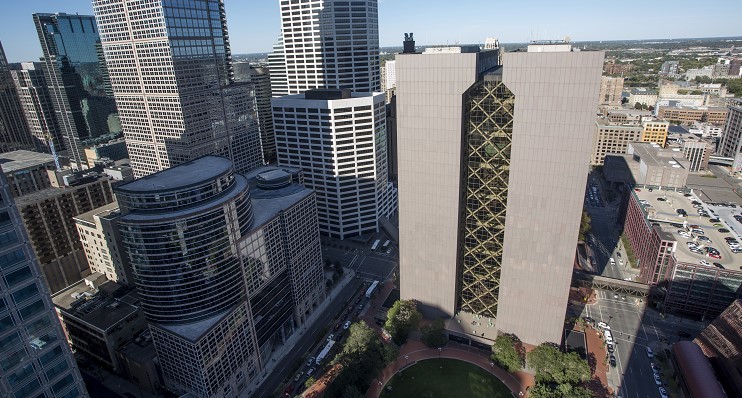Data Analysis Incarceration Trends LGBTQ June 24, 2022
A new Safety and Justice Challenge report explores the factors contributing to the overrepresentation in the criminal legal system of people who identify as lesbian, gay, bisexual, transgender, queer, or who hold other marginalized gender identity and/or sexual orientation identities (LGBTQ+). The report–which was released with funding support from the MacArthur Foundation–also explores how LGBTQ+ people or color and LGBTQ+ people with disabilities experience even higher rates of system involvement than their White LGBTQ+ peers.
A full copy is available for download here.
Documenting the number of LGBTQ+ within the criminal legal system is difficult because of the evolving terminology, a lack of uniform data collection, and people’s discomfort with disclosure in the system. Despite difficulties with data collection, emerging data indicate that LGBTQ+ individuals experience high rates of arrest and incarceration. According to an analysis of data from the National Survey on Drug Use and Health, gay, lesbian, and bisexual individuals were 2.25 times more likely to be arrested in the last year when compared to heterosexual individuals. Data from the 2015 National Transgender Discrimination Survey (NTDS) assessed arrest just within the last year and found that 6 percent of Black transgender women and 6 percent of Native American transgender women reported at least one arrest. By comparison, an estimated 3 percent of the overall U.S. population is arrested each year. According to a study using data from the National Inmate Survey, the incarceration rate of people who self-identified as lesbian, gay, or bisexual was three times that of the general U.S. population.
The report focuses on several things that contribute to LGBTQ+ people’s overrepresentation, as well as some ways they are impacted while in jail:
Discrimination by System Actors
LGBTQ+ individuals report high rates of discrimination and harassment by criminal legal system actors, including police, judges, and prison staff. A study of lesbian, gay, bisexual, and transgender individual’s experiences of discrimination within the criminal legal system conducted by Lambda Legal found that 73 percent of respondents had face-to-face contact with the police within the past five years. Almost a quarter reported that police had a hostile attitude towards them. Furthermore, the study found that, among respondents who had been involved in the court system in the last five years, 19 percent overhead a judge, attorney, or other court employee make negative comments about their sexual orientation, gender identity, or expression.
Conditions of Confinement
Inside jails and prisons, LGBTQ+ individuals experience heightened harassment and abuse. Prison and jail staff are often the perpetrators of this victimization; according to Lambda Legal’s report, among survey respondents with a history of incarceration 7 percent were sexually assaulted, 12 percent were physically assaulted, 27 percent were sexually harassed, and 57 percent were verbally assaulted or harassed by jail or prison staff. Staff also fail to prevent victimization; according to a survey conducted by Black & Pink of incarcerated LGBTQ+ individuals, 76 percent of respondents believe that prison staff intentionally placed them in situations where they were likely to be sexually assaulted by another prisoner. Incarcerated LGBTQ+ youth and adults report high rates of placement in solitary confinement while incarcerated.
Healthcare Barriers
People in jail who identify as LGBTQ+ are routinely denied inclusive health care, particularly transgender affirming care and HIV treatment. Black & Pink’s survey of LGBTQ+ inmates found that 67 percent of respondents had been diagnosed with a mental illness, yet 48 percent of people with a diagnosis were not receiving mental health therapy. Many transgender individuals choose to receive hormone therapy as a component of medically affirming one’s gender.
Criminalization of LGBTQ+ Identities
In recent U.S. history, stereotypes about deviance were perpetuated by laws targeting LGBTQ+ communities, such as those that criminalized homosexual sex and wearing clothing of the “opposite” sex. These laws have, for the most part, been overturned or repealed, or are no longer enforced, yet they contributed to lasting cultural representations and perceptions of LGBTQ+ individuals as deviant.
More recent laws criminalize aspects of LGBTQ+ identities in less direct ways. For example, in recent years many states have attempted to pass legislation restricting access to public restrooms and locker rooms for transgender individuals.
Regardless of engagement in criminalized activities, LGBTQ+ people are subjected to heightened police surveillance due to these perceptions of deviance. Additionally, this bias contributes to disparities in charges filed, adjudication, and sentencing of LGBTQ+ individuals.
The School-To-Prison Pipeline
Many LGBTQ+ students experience bullying in school. According to the most recent National School Climate Survey, 82 percent of lesbian, gay, bisexual, and transgender respondents had experienced verbal harassment at school, and 36.7 percent reported being physically harassed. Yet many do not receive help from school staff and instead defend themselves, which often results in punishment in accordance with so-called “zero tolerance” policies. Additionally, LGBTQ+ youth, particularly LGBTQ+ youth of color, are more likely to be punished for non-violent school infractions, such as public displays of affection and dress code violations.
Homelessness, Unemployment, and Poverty
Due to a complex web of family rejection, homelessness, unemployment, poverty, bias, and discrimination, LGBTQ+ individuals may turn to criminalized activities like theft, panhandling, and sex work in order to survive. Heightened police surveillance increases the likelihood of LGBTQ+ individuals being arrested and charged for forms of criminalized survival. LGBTQ+ individuals with a history of criminal legal system involvement experience heightened discrimination and exclusion from employment, education, and other opportunities because of their records, leading to continued homelessness, unemployment, and poverty. This creates a revolving door back into the system.
Violence and Victimization
LGBTQ+ individuals experience high rates of violence and victimization, including child abuse, intimate partner violence, sexual assault, and bias-related victimization. Yet many LGBTQ+ individuals feel uncomfortable seeking support, especially from the police.
Lacking legal or other supportive services, many LGBTQ+ individuals are left with few good options to protect themselves from victimization. There are no available data regarding the number of LGBTQ+ individuals who have been arrested or incarcerated for defending themselves from victimization.
Interrupting Pathways to Incarceration
The report spotlights organizations across the country working to interrupt these pathways and by extension, reduce the overrepresentation of LGBTQ+ people in the system. AA full copy is available for download here.

